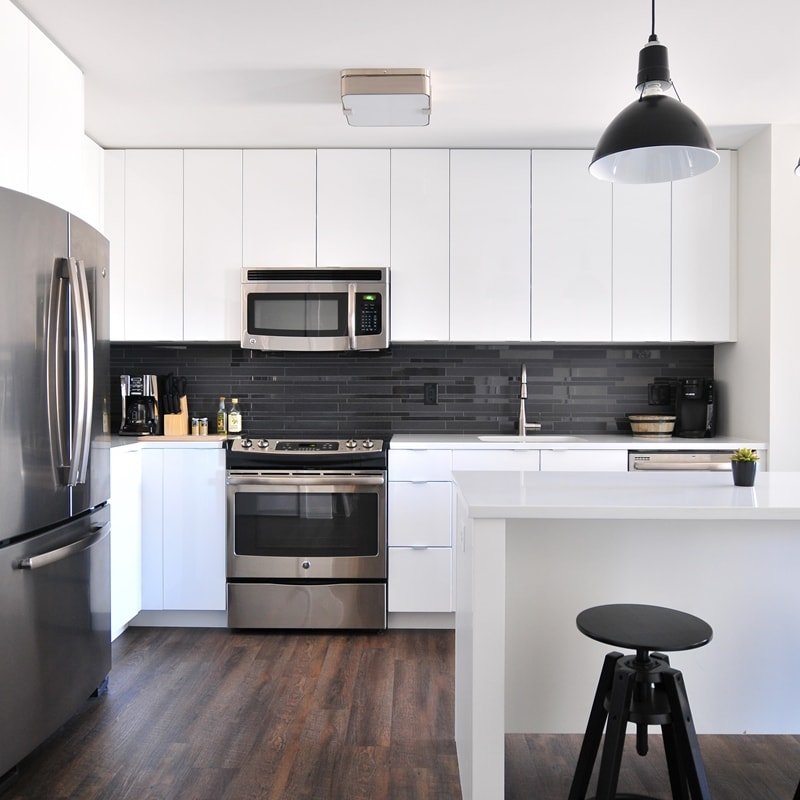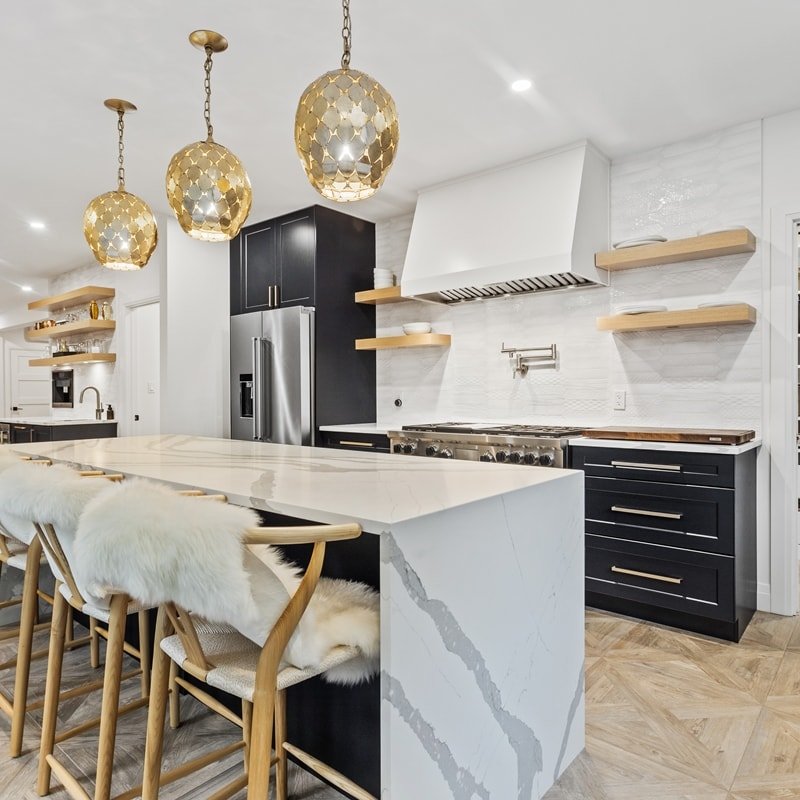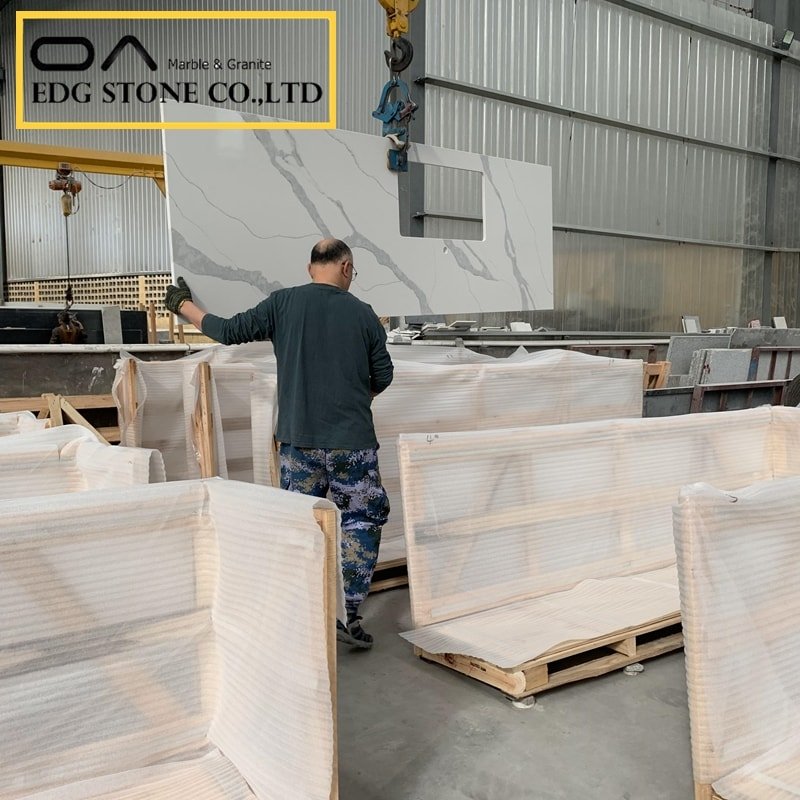Stone is often used in house renovation, such as quartz stone; For quartz stone processing, splicing can be described as the most difficult and important, quartz stone can not only be used on the kitchen stove but also can be used in home decoration.
In order not to affect the overall aesthetics, let’s take a look at the skills and splicing precautions for the seamless splicing of quartz stone.
01 Quartz stone seamless splicing skills
NO.1
To use quartz stone splicing, the inclined surface should first be polished to flat, and the bevel polished to 45 degrees is more appropriate. The technology of polishing is more skillful, so professional construction personnel are required to carry out the construction, so as to ensure the quality of construction.
NO.2
After the quartz stone is polished, the sticky glue should be pasted with the original glue of the same color, and its color should be checked before pasting to avoid differences in color.
After the color is determined, the connection of the quartz stone should be glued with paper glue, and during the gluing process, the glue cannot get to the quartz stone countertop, so it will be very troublesome to clean up.
NO.3
When making seamless splicing, first fix it with F clips, then apply it with glue, apply it for 15 minutes, and then polish and polish the connection with a water mill.
02 Quartz stone advantages
1. Anti-breakage, scratch without flowers
Because the production of quartz stone itself is formed by vacuum vibration extrusion, its hardness is not only strong, but also dense, of which Mohs hardness can reach 6-7.5 levels, and it is not easy to scratch.
2. High-temperature resistance
Because quartz stone is made of special materials, such as high-temperature resistance, its melting point is above 1300 degrees, so it can be used in complex environments such as kitchens.
3. The pattern is consistent throughout and on the surface
Quartz stone contains quartz minerals, which not only have a changeable pattern, but also appearance and texture also very beautiful, and decorative ability, and can be used in a variety of areas.
4. Anti-penetration, acid, and alkali resistance
The surface of quartz stone has undergone special treatment and polishing process, so its structure is very tight, the water absorption rate is particularly low, and the anti-fouling performance is also strong, and the stains are not easy to penetrate into it in use, such as daily oil and fruit. Juice, etc. cannot penetrate it.
03 Precautions for quartz stone splicing:
1. Before splicing, check whether the splicing surface of the splicing plate is straight and consistent, if the splicing interface is not straight and monastic, it will make the splicing appear obvious glue marks, affecting the quality of the splicing and the seamless perfection of the splicing. The simple way to ensure the interface is to first put the two plates to be spliced on the same plane so that the two sides to be spliced are as close as possible, fixed with F clamps, and then fixed in the appropriate position with a positioning guide ruler, and cut the two sides to be spliced at the same time with a gong machine to obtain a flat and homogeneous splicing interface.
2. In order to make the upper front end of the splicing interface tight and seamless, wipe it with 120# sandpaper below 2mm-3mm on the front of the splicing interface, and then clean the splicing place with alcohol or Tianna water, and finally check whether the splicing interface is flat and uniform.
3. At the front splicing edge of the two plates to be spliced, use instant bonding to fix the splicing with small plates, and fix the number of small squares and the distance from the splicing edge, depending on the area of the splicing and the selection of fastening tools.
4. Put the prepared two plates on the same plane, and then glue a single-sided tape under the splicing interface to prevent the glue from dripping during splicing, and leave a 3mm gap between the two plates to ensure that the glue is effectively controlled during splicing and the glue is fully accommodated.
5. Pour the prepared glue evenly on the splicing joint, the amount of glue accounts for more than 1/2 of the remaining gap, and then use the F clamp or A clamp as soon as possible to tighten the spliced board, carefully check whether the spliced surface is flat when fastening, if it is not even, you must use a rubber hammer to gently hammer the surface above the board surface until the inspection is completely flat.
6. During the glue curing time, all fixtures shall not be loosened or moved at will, and people cannot stand or put other heavy objects on the table, otherwise the quality of the splicing will be seriously affected.
7. After the glue is cured, remove the excess glue with a gong machine or angle grinder, and then use a grinder to smooth it, and must not use a chisel











